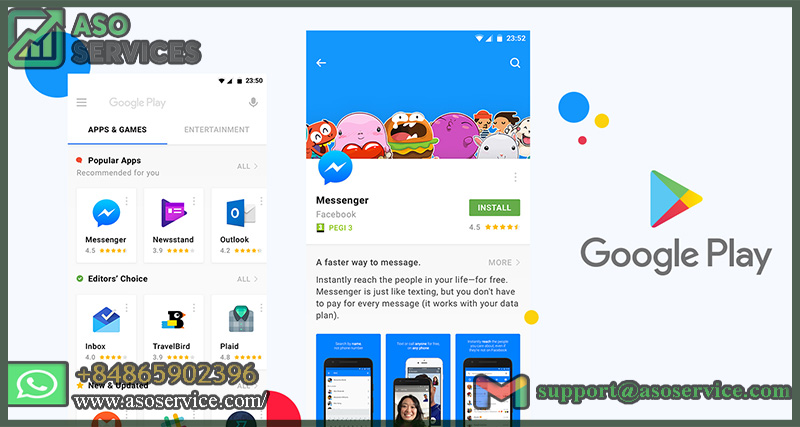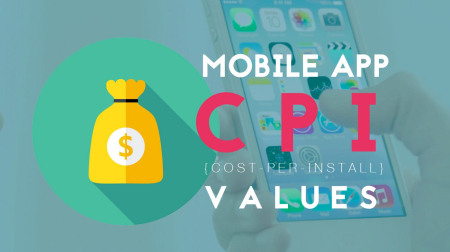Effective strategies for Google Play Store marketing for Android apps can help increase the visibility and downloads of Android apps, ultimately leading to the app's success.
Related posts
Maximizing Exposure: Top Strategies to promote iOS App
The Essential Guide to App Store Optimization for iOS
1. App Store Listing Optimization
App Store Optimization (ASO) is optimizing mobile apps to rank higher in an app store's search results. Here are some tips for optimizing your app's listing on the Google Play Store:
Keyword research: Use relevant keywords that describe your app's features and functions. Use Google Keyword Planner, SEMrush, or other keyword research tools to find the most popular keywords and phrases related to your app.
App title: Your app's title should be unique, catchy, and relevant to your app. Use your primary keyword in your app title.
App description: Write a compelling and informative app description that clearly explains what your app does and how it can benefit users. Use your primary and secondary keywords in the description.
App icon: Your app's icon should be unique, attractive, and representative of your app's purpose.
Screenshots and videos: Use high-quality screenshots and videos to showcase your app's features and benefits. Include screenshots that show different features and use cases of your app.

App Store Listing Optimization, Source: Asoservice.com
Ratings and reviews: Encourage users to rate and review your app. Positive ratings and reviews can improve your app's visibility and increase downloads.
Localization: Localize your app's listing for different countries and languages. Use localized keywords and descriptions to increase your app's visibility in different regions.
App updates: Regularly update your app with new features and improvements. This will increase user engagement and help you stay competitive in the app store.
Following these tips can improve your app's visibility and downloads on the Google Play Store.
2. App Reviews and Ratings of Google Play Store Marketing for Android apps
App reviews and ratings play a crucial role in marketing Android apps on the Google Play Store. Positive reviews and high ratings can help increase the visibility of an app, attract new users, and improve its overall ranking on the Play Store.
To maximize the impact of app reviews and ratings, app developers and marketers should:
Encourage users to leave reviews: This can be done through in-app prompts or notifications or by offering incentives such as exclusive content or discounts.
Respond to reviews: Positive and negative reviews show that the developer is engaged with users and values their feedback. It can also help to address any issues or concerns that users may have.
Monitor and analyze reviews: Regularly monitoring reviews can provide valuable insights into user behavior and preferences and identify any bugs or issues that need to be addressed.
Address negative reviews: Responding to negative reviews can help to address user concerns and improve overall satisfaction. It can also help mitigate negative reviews' impact on the app's rating.
Use reviews in marketing materials: Highlighting positive reviews and ratings can help attract new users and build trust in the app.
Overall, app reviews and ratings are essential to app marketing on the Google Play Store and should be actively managed and leveraged to maximize their impact. If you want to increase your invisibility, let's buy Microsoft store app reviews from real users worldwide countries
3. App Pricing and Monetization of Google Play Store Marketing for Android apps
App pricing and monetization of Google Play Store marketing for Android apps are essential to mobile app marketing. It is important to understand the various strategies and tactics that can be used to maximize revenue from the Google Play Store.
The most common app pricing strategy for Android apps is a subscription or freemium model. A subscription model allows users to pay a monthly fee to access the app and its features. Freemium models usually involve free versions of the app with limited features and then an in-app purchase to unlock additional features.
Another pricing model that can be used is a pay-per-download model. This is an excellent option for apps with a great and loyal user base that will download the app and make in-app purchases.
Google Play offers other monetization options, such as in-app advertising, purchases, and paid apps. In-app ads are an excellent way to make money from the app without charging users directly. In-app purchases are a great way to offer users additional features and content for a fee. Paid apps are a great way to generate revenue but can be risky if users don't like the app.
4. App Promotion and Marketing
App promotion and marketing are essential aspects of any successful mobile app strategy. It involves identifying your target audience, creating a marketing plan, and executing various tactics to increase app downloads, user engagement, and retention.
Here are some tips for effective app promotion and marketing:
Define your target audience: Knowing your audience is crucial for creating an effective marketing strategy. Research your target audience's demographics, interests, and behavior patterns.
Optimize app store presence: App store optimization (ASO) is critical in driving app downloads. Optimize your app store listing by using relevant keywords, creating an appealing app icon, and writing compelling descriptions.
Leverage social media: Social media platforms can be powerful tools for promoting your app. Use social media channels to engage with your target audience, create a buzz around your app, and drive downloads.
Offer incentives: Offering discounts, free trials, or exclusive content can motivate users to download and use your app.
Collaborate with influencers: Partner with influencers with a significant following in your target market. They can promote your app to their followers, increasing your app's visibility and credibility.
Measure your results: Continuously track your app's performance, monitor user behavior, and measure the effectiveness of your marketing tactics. Use analytics tools to identify areas for improvement and optimize your marketing strategy accordingly.
Remember, app promotion and marketing is an ongoing processes. It requires consistent effort and a willingness to adapt to changing user preferences and market trends.
5. App Analytics and Optimization of Google Play Store Marketing for Android apps
App analytics and optimization are critical components of a successful Google Play Store marketing strategy for Android apps. Here are some tips for effectively analyzing and optimizing your app marketing efforts:
Set up tracking and analytics: Use Google Analytics for Firebase or other mobile analytics tools to track user behavior, such as app usage, retention, and engagement metrics. This data can help you identify areas for improvement in your app marketing strategy.
Use A/B testing: Use A/B testing to test different marketing messages, app features, and user experiences to optimize your app's performance. This approach lets you compare two app versions and identify the best performance.
Optimize app metadata: Optimize your app's title, description, and keywords to improve its discoverability in the Play Store. Use keyword app installs and phrases that users are likely to search for.
Encourage user ratings and reviews: Positive ratings and reviews can significantly impact your app's ranking and download rate. Encourage users to rate and review your app by offering incentives, such as in-app rewards.
Monitor and respond to feedback: Monitor user feedback and respond promptly to complaints or issues. This approach can improve user satisfaction and increase retention rates.
Use Google Play Console features: Google Play Console provides several features to optimize your app marketing strategy, including the ability to run experiments, analyze user feedback, and monitor app performance.
Remember, app marketing optimization is an ongoing process. Monitor and analyze your app's performance, and adjust your strategy accordingly to improve user engagement, retention, and downloads.
6. App Updates and Maintenance
Regular app updates and maintenance are essential to keep your app functioning correctly, improve its performance, and enhance user experience. Here are some tips to help you effectively manage app updates and maintenance:
Plan your updates: Create a roadmap for your app updates, including new features, bug fixes, and performance improvements. This plan can help you prioritize your development efforts and ensure your updates align with your business objectives.
Please communicate with your users: Notify them when you release a new update, and inform them about the new features or improvements. This approach can keep your users engaged and excited about your app.
Test thoroughly: Before releasing an update, test it thoroughly to identify and fix any bugs or issues. This approach can help you avoid negative user feedback and ensure your app runs smoothly.
Keep your app secure: Regularly update your app's security features, such as encryption, authentication, and access control, to protect user data and prevent security breaches.
Address user feedback: Listen and incorporate it into your updates. This approach can improve user satisfaction and increase app retention.
Monitor app performance: Monitor your app's performance, including user engagement, retention, and conversion rates. Use analytics tools to track these metrics and identify areas for improvement.
Remember, app updates and maintenance are ongoing processes. Continuously monitor your app's performance, and update it regularly to provide the best user experience and ensure the long-term success of your app.
Conclusion
By utilizing effective marketing strategies such as optimizing app metadata, encouraging user ratings and reviews, and regularly updating and maintaining the app, Android app developers can improve their app's discoverability, engagement, and retention rates and ultimately achieve success in the highly competitive Google Play Store market.
Related posts
https://asoservice.com/increase-app-installs-from-google-ads
https://asoservice.com/ios-android-app-reviews-ratings
Thanks so much for reading this article.
Source: https://asoservice.com/












Leave a Reply
Your e-mail address will not be published. Required fields are marked *